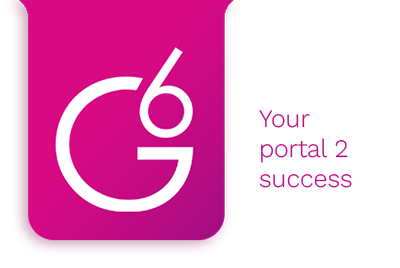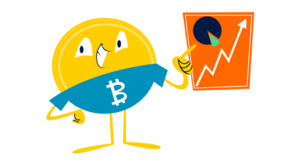Does your company have difficulty finding new leads (or potential customers)? Are you looking to personalize your sales approach?
If these questions resonate with you, then you’re in the right place! Small businesses everywhere are looking for ways to expand their target audience.
Hi, my name is AJ! I started Small Business Bonfire after selling my company for multiple seven figures.
Building my company was challenging, especially when it came to finding new leads. However, when I discovered outbound sales techniques, everything changed!
Keep reading if you want to learn more about outbound sales and why this tactic is beneficial!
Key Takeaways
Outbound sales are when reps reach out to potential buyers, initiating the initial contact.
Inbound leads come from engaging social media content or emails, enticing the lead to engage with a brand.
Inbound and outbound sales differ in how contact is initiated and the target audience.
The benefits of outbound sales include the fact that teams can control the sales funnel and create personalized pitches.
Outbound sales refers to the traditional method of sales where sellers initiate contact with potential customers.
The outbound sales process is a proactive approach that involves reaching out to leads through tactics such as:
Cold callingMass email campaigns Trade shows
What’s the purpose of an outbound sales strategy?
The goal of outbound selling is to do the following things:
Spark interestEngage the leadClose the sale
An effective outbound sales strategy requires extensive research to identify potential customers!
On top of that, sales reps MUST tailor each communication channel to appeal to the prospective buyer.
Creating a customized buying experience allows agents to form deeper connections with clients and build long-term brand loyalty!
Lastly, despite the rise of inbound sales, outbound sales remain an effective tool, particularly for B2B (business-to-business) companies and high-ticket B2C (business-to-consumer) items.
Inbound sales is a sales strategy where potential customers are drawn in, largely through digital channels, by delivering valuable content.
Unlike outbound sales, which rely on the sales rep reaching out, inbound sales involve the customer making the initial contact.
Usually, these potential buyers reach out to your company after a sales rep entices them with content or exclusive offers.
Inbound sales strategies align the individual sales process with the customer’s buyer’s journey.
Further, the primary objective of inbound sales is to provide potential customers with the correct information at the right time, gaining their trust and, eventually, their business.
Inbound sales approaches are efficient in the digital age, where customers increasingly perform their research before making a purchase decision.
Inbound and outbound sales differ fundamentally in their approach and execution.
For example, here are four primary differences between inbound and outbound sales:
Initiation of Contact
In outbound sales, sales reps contact potential customers, usually through the following methods:
Cold callsEmailsTrade showsNetworking events
On the other hand, in inbound strategies, the customer initiates contact after being attracted by relevant content or an enticing offer.
Some examples of relevant, enticing content include:
Social media posts Social media direct messages Email marketing campaigns Print ads TV ads
Target Audience
The outbound sales process usually targets a broader audience.
Remember, outbound sales strategies aim to spark interest through mass outreach.
In comparison, inbound sales target a specific audience who have already shown interest in the brand or products.
Therefore, your sales team labels inbound leads as “hot” because they’re more likely to purchase your products or services.
Sales Process
Another way outbound and inbound sales differ is through the sales process.
For instance, the outbound sales process is proactive and often requires extensive research to tailor communication to prospective buyers.
In comparison, the inbound strategies align with the customer’s buying journey, providing them with the correct information at the right time!
Because inbound tactics target hot leads, sales are usually more streamlined than outbound.
Effective Industries
Outbound strategies are usually more effective for B2B companies and high-ticket B2C items.
On the other hand, inbound strategies are often more efficient in the digital age, where customers increasingly perform their research before making a purchase decision!
Outbound sales techniques have several benefits, including the following:
You can reach prospects faster It’s more predictableThere’s more precision and personalization Businesses have more control over the sales funnel
Here’s what you need to know about each of these advantages!
Prospect outreach speed is how a sales team can connect with potential customers in an outbound sales strategy.
Outreach speed is a significant advantage because it offers immediate contact with a broad audience rather than waiting for leads to discover and engage with your content organically.
Also, the faster you reach out to prospects, the sooner you can pitch your product or service, accelerating the sales cycle.
Lastly, a quick outreach speed can give businesses an edge over competitors by being the first to engage potential customers with their offerings.
Outside sales, with standardized protocols and comprehensive databases, becomes predictable at scale because the more prospects you reach out to, the more patterns you can identify and leverage!
This predictability allows for the following things:
Refined targetingEnhanced efficiency The optimization of sales tactics over time
Also, predictability provides a clear insight into the sales funnel, helping businesses forecast sales and plan accordingly.
Therefore, the predictability of outbound sales at scale can be advantageous, allowing for:
More strategic decision-makingEffective resource allocationImproved sales outcomes
The outbound sales process allows for precision and personalization in reaching potential customers.
Through extensive research on leads, sales reps can tailor their outreach, crafting specific messages that resonate with each prospect’s needs and preferences.
This personalized approach not only garners the attention of prospective customers but also makes them feel valued and understood!
As a result, such precision and personalization in outbound sales cultivate a connection between the brand and the customer.
When customers feel deeper connections, it increases the likelihood of successful conversions!
Lastly, consumers in today’s shopping world seek more personalized buying experiences.
Therefore, offering this custom approach can give your business an edge over others in your industry!
Outbound sales give businesses control over their sales funnel, which nurtures leads from first awareness to purchase.
This control is crucial because it allows sales teams to actively target and engage potential customers rather than passively waiting for customers to initiate contact.
Also, controlling the sales funnel facilitates a proactive approach to managing the sales pipeline, enabling businesses to strategize and forecast more effectively.
Lastly, having control over the sales funnel means businesses can do the following things:
Fine-tune their processes to optimize conversions.Ensure the sales team’s efforts are directed toward the most promising leads.
There are two types of outbound sales reps, including the following:
Sales developments reps Lead response reps
Here’s what you need to know about the duties and responsibilities for each role!
Sales development representatives (SDRs) are crucial in an outbound sales structure.
These employees primarily generate and nurture leads in the initial stages of the sales process.
Further, SDR responsibilities often include the following things:
Prospecting potential clients through cold calling, email outreach Conducting preliminary qualification assessments Establish a solid foundation for a relationship with potential customers Pass the qualified leads to account executives for further engagement and closure
Lastly, a sales development rep’s role is instrumental in building a robust sales pipeline and driving revenue growth.
Lead response representatives are integral to outbound sales, taking up the mantle after SDRs generate and qualify the leads.
These employees are primarily tasked with prompt and effective follow-up on these leads, engaging them in a sales dialogue to convert.
Also, lead response reps often employ advanced sales techniques, leveraging the information gathered by SDRs to craft personalized pitches and responses.
As you can see, these agents are integral to the sales team because they nurture customer relationships and drive deals.
As a result, lead response reps significantly impact a company’s sales performance and revenue.
The outbound sales process consists of five steps, including the following:
Segmenting customer groups Generating leads and prospecting Reaching out to prospects and qualifying them Demonstrations Closing the deal
Here’s what you need to know about each of these steps!
Customer segmentation is dividing a company’s target market into distinct groups based on shared characteristics such as:
DemographicsBuying habitsInterests BehaviorsSocial media interactions Website interactions
Further, customer segmentation is a crucial strategy for a successful sales team because it enables reps to tailor their marketing and sales approaches to resonate more effectively with each specific segment.
Also, by understanding and addressing these distinct customer groups’ unique needs and preferences, businesses can do the following things:
Enhance their engagement strategiesImprove customer satisfaction Drive higher sales conversions
Lead generation and prospecting are pivotal processes in the sales cycle!
Lead generation refers to identifying potential customers (or leads) who have shown interest in your product or service and gathering their information for follow-up.
On the other hand, prospecting involves actively searching for potential customers to generate new business.
These processes are vital because they do the following things:
Help build a robust sales pipelineFuel the sales process Drive business growth
Outreach involves establishing initial contact with the potential customers identified during the lead generation and prospecting phase.
Reaching out to potential customers is an essential process where sales reps initiate conversations via various channels like:
EmailPhone calls Social media
Put simply, the outreach stage’s goal is to pique prospects’ interest!
Further, lead qualification assesses the potential of leads based on their interest in the product or service and their ability to make a purchase.
Essentially, your agents should filter out the most promising prospects for further engagement.
Product demonstrations, often called ‘demos,’ are an integral part of the sales process where a sales rep presents a product or service to a potential customer.
During a demo, sales representatives show what the product does and how it can solve the customer’s problem or meet their needs.
Further, the ultimate goal is to highlight the product’s value proposition and unique selling points, persuading prospects to purchase.
In essence, demos aim to convert leads into paying customers by emphasizing the following aspects of a product or service:
FunctionalityBenefits Relevance to the customer’s situation
The final step in the outbound sales process is closing the deal!
Of course, your sales team will only be able to close some deals they pursue.
Still, your team can close more deals with the right sales strategies and customer information.
Typically, closing a deal involves signing a contract so the customer and business are on the same page regarding the following details:
Price Payment schedule Terms Legal aspects Delivery details
There are several strategies outbound sales reps can take to close deals and build customer relationships.
However, the most popular activities include the following:
Cold calling Cold emailing Social selling
Which of these strategies will be most effective for your company?
Keep reading to discover how these tactics can secure outbound leads and convert them to paying customers!
Cold calling is a proactive outbound sales strategy where reps reach out to potential customers, typically via phone.
The people agents contact via cold calling are individuals who have not previously expressed interest in the products or services your company sells.
Cold calling is an approach that involves direct communication with the prospect, providing an opportunity to deliver a personalized sales pitch!
Further, despite its reputation, cold calling can be effective when done correctly.
For instance, cold calls enable immediate rapport building and help unearth immediate customer needs.
Therefore, cold calling remains a valuable tool for generating new leads and maintaining a robust sales pipeline.
Cold emailing is a targeted, scalable, and efficient outbound sales strategy where reps send unsolicited emails to potential customers.
The content of these emails typically includes the following things:
A personalized introductionA value proposition A call to action
Like outbound sales calls, cold emailing can be highly effective when crafted carefully.
When agents send the right kind of emails, it demonstrates an understanding of the recipient’s needs and offers relevant solutions.
Also, this outbound sales method allows for a broader reach and provides valuable insights into customer behavior when coupled with automated tracking systems.
As a result, cold emails aid in strategic decision-making and enhance conversion rates!
Social selling is one of the more modern outbound sales techniques where reps utilize social media platforms to find and engage with potential customers.
Instead of cold calling or emailing, salespeople use social networks to connect and interact directly with prospects.
Some examples of effective social media networks include the following outlets:
Instagram Facebook LinkedIn Twitter/X
This approach allows salespeople to personalize their sales messages based on the prospect’s social media activity.
Therefore, social selling can lead to more relevant and engaging interactions.
As a result, social selling can do the following things:
Help build stronger relationshipsFoster trust Increase sales conversions
Now that you understand effective outbound sales strategies, it’s time to learn some best practices!
Some outbound sales tips to boost your outbound sales success include using the following techniques:
Segmenting customer lists Focusing on each customer as an individual Use various communication channels Utilizing the power of social media Automate as many processes as you can Ask for referrals
Let’s look at each of these best practices closer!
Segmenting your customer lists allows you to tailor your outreach methods and messages to resonate with each unique group.
By segmenting, you can improve engagement rates and increase sales!
On top of that, segmenting helps identify high-value segments that your team can target more aggressively.
Focusing on the customer is crucial because it allows you to understand their needs, preferences, and pain points.
As a result, your team can tailor your product or service to meet their specific requirements.
Further, this customer-centric approach does the following things:
Enhances customer satisfaction Boosts brand loyalty Drives business growthImproves sales conversion rates
Utilizing multiple channels for outreach amplifies your sales efforts.
For instance, by diversifying communication channels, you accommodate different customer preferences.
As a result, diversification increases the likelihood of successful engagement and fosters a stronger connection with your target audience.
Social media marketing serves as a powerful tool in outbound sales.
With social media outlets, sales teams can do the following things:
Directly engage with potential customers Learn about consumer preferences and behaviorsPersonalize sales approaches Boost conversion rates
Automation can significantly enhance efficiency by reducing manual tasks, allowing a sales representative to focus on higher-value activities.
Also, automation tools can streamline the following tasks:
Lead generationCustomer segmentation Follow-up processes
Soliciting referrals from satisfied customers can provide powerful social proof and open doors to new prospects!
Here are seven metrics sales teams can use to track the success of an outbound sales funnel!
The number of phone calls an outbound sales team completes represents the volume of direct contact made with potential customers.
A higher number often correlates with an increased opportunity for sales conversions!
The number of emails a team sends is another crucial metric that signifies the extent of outreach.
As you can imagine, a higher volume leads to increased engagement and conversion opportunities.
The deal close rate represents the percentage of leads a team successfully converts into paying customers after going through the sales process.
The outbound conversion rate represents the percentage of outbound leads that are successfully converted into paying customers through various outbound sales strategies.
Customer acquisition cost (CAC) represents the total cost associated with convincing a potential customer to buy a product or service, including:
Expenses related to marketingMarket research Accessibility costs
Customer lifetime value (CLV) is a vital metric that signifies the total revenue a business can reasonably expect from a single customer account throughout its relationship with the company.
Lastly, projected pipeline value estimates the potential revenue from deals currently in the sales pipeline based on the probability of their successful closure.
Here’s what you need to know about B2B and B2C outbound sales processes!
Outbound sales for B2B companies is the strategic process of proactively reaching out to potential business clients.
Teams often achieve this through means such as:
A cold sales callEmail marketing Social selling
Further, the essence of B2B outbound sales is to target businesses that could benefit from the company’s product or service.
Therefore, a key aspect of this approach is the identification and understanding of the specific pain points of each business customer.
B2B sales reps utilize personalized strategies to demonstrate how their solution can cater to these needs.
Also, the success of B2B outbound sales relies heavily on the ability to:
Build meaningful relationshipsFoster trust Provide value above and beyond the competition
Overall, in the B2B landscape, outbound sales serve as a vital tool for customer acquisition and business growth!
Outbound sales for B2C companies is the proactive outreach to individual consumers, typically in large volumes.
This strategy often utilizes mass marketing tactics, including:
Direct mailTelemarketing Digital advertising
Unlike B2B, B2C outbound sales must resonate with a broader audience, emphasizing the benefits and value of the product or service to the general consumer.
While important, personalization leans towards catering to consumer demographics and market trends rather than individualized pain points.
Also, emotional appeal and creating a strong brand image often play significant roles in successful B2C outbound sales!
In essence, B2C outbound sales focus on reaching a wide consumer base and persuading them of the product’s value.
There are endless sales tools out there, but which ones help in closing deals and building meaningful relationships?
The two tools that have helped me most in the past include CRM and prospecting software!
Customer relationship management (CRM) software is a tool that aids businesses in managing and analyzing customer interactions and data to improve customer retention and drive sales growth.
This tool is beneficial as it allows businesses to:
Build strong relationships with their customersStreamline processes Improve profitability
Also, a CRM system’s analytical capabilities provide valuable insights into customer behavior and preferences, contributing to more effective sales strategies!
Prospecting software is a digital tool that assists sales teams in identifying and reaching potential customers, or ‘prospects.’
These tools automate the following processes:
Sourcing new leadsExtracting relevant data Segmenting customers for personalized outreach
The benefit lies in their ability to streamline and enhance the lead generation process.
As a result, the sales team has more time to focus more on cultivating relationships and closing deals.
Lastly, prospecting software also increases the scale and efficiency of outbound sales efforts.
Take the case of a software development company selling project management tools.
The sales team identifies potential leads by researching companies that could benefit from better project management.
After segmenting these companies based on size and industry, they initiate contact using a mix of the following methods:
Cold emailsPhone calls Social media outreach
After that, sales reps personalize their communication, highlighting how their software addresses specific pain points.
Further, agents offer free trials, demos, or informative webinars to provide a firsthand experience of their product!
This proactive, outward-bound approach helps the company do the following things:
Reach potential customersGenerate leadsDrive effective sales conversations
There’s everything you need to know about outbound sales!
Remember, outbound sales involve initiating the first contact with potential buyers through tactics like cold calls and emails.
With this tactic, you can personalize your sales pitches and explain how your company’s product or service can benefit the person you’re selling to!
Will your company implement inbound or outbound sales techniques? Or both? Let us know in the comments section below!
The post What is Outbound Sales? Guide for SMBs appeared first on Small Business Bonfire.
—
Blog powered by G6
Disclaimer! A guest author has made this post. G6 has not checked the post. its content and attachments and under no circumstances will G6 be held responsible or liable in any way for any claims, damages, losses, expenses, costs or liabilities whatsoever (including, without limitation, any direct or indirect damages for loss of profits, business interruption or loss of information) resulting or arising directly or indirectly from your use of or inability to use this website or any websites linked to it, or from your reliance on the information and material on this website, even if the G6 has been advised of the possibility of such damages in advance.
For any inquiries, please contact [email protected]




